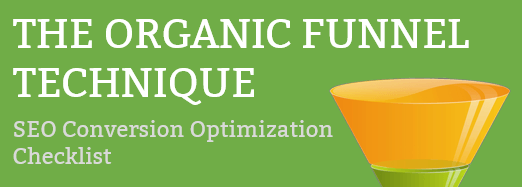
So you’ve finally started regularly publishing content across many channels but mostly to your own website blog and podcast. As a bonus, the social media team is super busy promoting this new content all over social channels.
You’re even making guest appearances on podcasts and blogs, but now months later, you’re not seeing much movement in organic traffic and your keywords haven’t moved much either.
The executive team is wondering where their investment went.
What went wrong?!?
A lot of companies make common mistakes that can hinder their SEO project success.
They assume that a lot of regular content means winning at search rankings. If that was the case, then simply getting AI to generate hundreds of unique posts a day would solve all of your problems. But it doesn’t.
Turns out, this isn’t even close to the truth.
Understanding the SEO Ecosystem
In 2024, creating high-quality content is crucial. Instead of producing a large volume of content, focus on delivering valuable and well-researched information that addresses your audience’s needs. Use various formats like articles, videos, and social posts, memes, and microcontent to keep your consumers engaged.
Knowing your audience is essential. These days, gaining visitor data to understand their demographics and behavior is no longer out of reach for most companies. Create segmented visitor personas to tailor your content effectively to the right audiences. By understanding what your audience is looking for, you can create content that resonates with them and meets their needs. This of course is pretty obvious. The more tailored your content is to a specific market segment, the better it will perform.
Keywords remain a vital part of SEO. Use tools like Ahrefs, SEMrush, and Ubersuggest to find relevant keywords. Focus on long-tail keywords and understand user intent to incorporate these keywords naturally into your content. There are many studies that show people are using phrase-based searches to find what they want because of how AI search and voice search has trained people.
Your entire strategy should revolve around, not only creating great content, but making sure that it’s for the right audience and actually reaches them wherever they may be online.
So who is your right audience?
6 Rules for Creating the Right Content
In order to get the traffic and conversions you’re looking for, you have to build content that is ideal for your target audience. This means you have to be both trustworthy and an authority on the topic (you’ve heard of Google’s EEAT right?).
So the key to great content for SEO is to make it useful and interesting to the consumers of your content.
Think about your content being its own product that your company creates.
You want people to “buy” your product don’t you, which is in this case your content?
You have to market your product or no one will know it is there. This is why being recognized as an authority is so critical.
You won’t make it far in today’s market by creating content just for the sake of creating it for search engine and keyword rankings.
Its important content meets, or even exceeds, the expectations of your audience, which means making the info you share more valuable than your competitor’s content. There are six rules to making excellent content:
Make sure it’s not promotional.
Promotional content isn’t useful and doesn’t inspire action, both of which are important for content marketing.
Make sure it’s relevant.
Writing generic content isn’t going to be highly relevant to your readers. Always create content that is useful to your reader. In fact, go above and beyond and offer additional content they can read or watch beyond the initial content to create more value.
Solve a problem or answer a question.
This is a great way to create content that is informative and useful. There’s no point in making content with useless information because that will only waste your time and your audience’s.
Write well-written content.
Poorly written content will drive people away and give your company a bad image. Make sure that your content is error-free and is presented in a thoughtful manner but not so technical that they use it for falling asleep at night.
Make your content relevant to your company.
If what your business is writing doesn’t support its objectives at all, this will make your content a waste of resources to produce. Ensure that your business goals are kept in mind when creating content. All content should have a goal! Tweet This
Support content with proof.
Since your content will seem biased, it’s a good idea to support it with third-party quotes, testimonials or metrics and stats.
5 Vital Questions to Find Your Target Audience
Your content marketing strategy won’t work if you don’t get your materials in front of the correct people.
Once you know your target audience, you need to use the correct mediums so they can access your content conveniently.
Before writing content, make sure that you have answers to 5 vital questions:
- Who is your ideal listener, reader, viewer or client?
- Do they prefer to read, watch or listen?
- Would they rather watch a video or read transcribed notes?
- Would they set aside time to attend a live webinar or teleseminar or prefer to download the MP3 to listen at another time?
- What device are they using — phone, desktop or tablet?
This will enable you to create a customer profile that will help you with building content that suits their needs, plus you’ll be able to get it in front of them in their preferred delivery method.
Knowing how your audience likes to consume their content is just as important:
- Do they like watching YouTube videos?
- Do they like to read or listen to audio?
- Do they subscribe to blogs, newsletters or both?
- Are they on Twitter daily or every now and then?
- Do they actively use LinkedIn or just use it for research?
- Are they on Facebook a lot?
- Do they frequently check out slide decks on Slide Share?
Once you know how and where your readers like to gather content, you can then make sure that your content is strategically placed there for their viewing, listening or reading.
This is Not the Audience You’re Looking For
So you’ve answered the questions above and you think you know who your target is?
That may be true, but it is probably missing a key element to make your articles and SEO really take off.
The fact is, most people do not share content but just consume it.
They are a great audience to target because they are most likely your potential customers.
But at the top of your list should be influencers in your industry.
These are the people who are driving conversations and “influencing” buyers.
Getting this audience talking about your product or service is going to drive a much larger audience than you can on your own.
They also already rank well in search engines for the topics you want to rank for and having them talk about you is also going to multiply the reach of your content and improve your search rankings.
If you want to succeed at SEO, you want to understand this audience segment, their needs for content and how to communicate with them without being spammy.
Monitoring Your Content Analytics and Adapting
Tracking performance and adapting your SEO strategy based on content data insights are critical. Use advanced analytics tools to monitor key metrics like organic traffic sessions, engagement rates, and SEO conversion rates. Regularly review and adjust your strategies to stay ahead of trends. Google Analytics provides valuable reports to track performance and inform decision-making.
Content analytics is vital in winning the SEO game. Analyzing how your content performs can provide insights into what works and what doesn’t.
Tools like Google Analytics and HubSpot can help you understand user engagement, identify popular content, and refine your content strategy accordingly.
By continuously monitoring and analyzing content performance, you can make data-driven decisions that enhance your SEO efforts.
SEO Techniques for in 2024
AI generated content has been all the buzz over the last year. You should NOT use AI to totally generate your content, but you should leverage generative AI to gain a competitive edge (for now). AI tools can analyze user behavior, predict trends, and personalize content. Use tools like MarketMuse for content optimization and BrightEdge for predictive analysis.
Voice search optimization is becoming increasingly important. Optimize your content for natural language and question-based keywords. Ensure your website provides clear and concise answers to common questions to capture voice search traffic.
Visual and video SEO are crucial in today’s digital landscape. On many occasions, when we have created both a video and a blog post for ranking on a particular keyword, it has performed better. Optimize your images and videos with descriptive filenames, alt text, and proper tagging. Create engaging video content and ensure it’s optimized with relevant keywords and metadata.
Building Content that Reaches Your Audience AND Influencers
If you want your content marketing strategy to be successful, you have to make sure that you are building information, educational and/or entertaining content, that readers will find worthy of viewing, reading or listening to.
Influencers want content that furthers their discussion and provides evidence or enhances their point of view.
When setting up the right times to deliver the content, you can use different scheduling tools to help make your campaigns easier, like MailChimp for newsletters and emails or Buffer to automatically schedule posts to social media sites.
Research is very important for finding your audience and their preferred venues so that you can post content at the best times.
Implementing this all into your content marketing strategy will raise your conversion rates and improve your organic traffic.
It will take time and effort.
So forget the idea of publishing as many articles as you can.
It does nothing for you except waste time.
Instead, focus on creating content that influencers will share and therefore multiply your potential reach.



